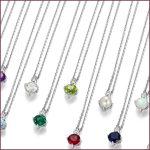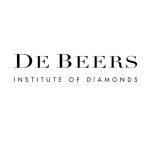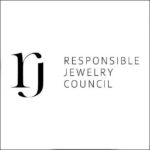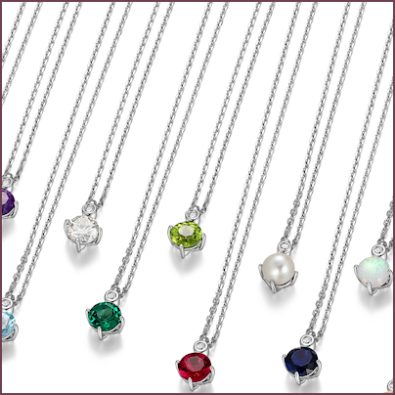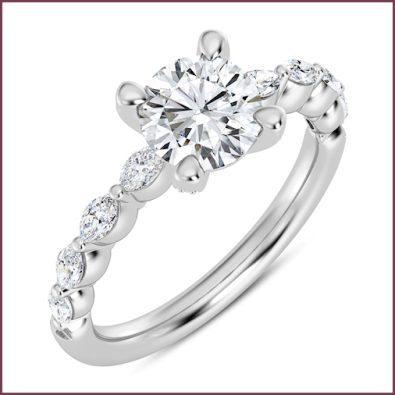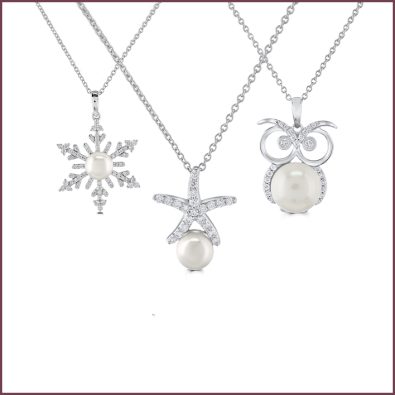Sustainability Key Purchasing Factor for Diamonds

Sustainability was ranked by 30% of consumers as their most important consideration – above price and design – when choosing a diamond.
Sustainability considerations now rank on par with price and design for global consumers when purchasing diamonds, according to new research published last fall by De Beers Group in its eighth annual Diamond Insight Report, titled “Sustainability: shaping the future of the diamond sector.”
Based on a global study of more than 8,400 people across seven key consumer markets for diamonds, the report found sustainability considerations are influencing purchase decisions across all sectors, with 60% of consumers and more than 80% of opinion leaders (those who influence decisions of family and friends) having chosen to buy a product made in a more environmentally or socially responsible way over other products that are not.

The study ranks fine jewelry third, after only food and clothing, as the category most frequently purchased on the basis of sustainability considerations, with one in five consumers recently buying jewelry because of its sustainability credentials. When it came to diamond jewelry, the study found sustainability considerations a key factor for consumers in all markets.
Sustainability was ranked by 30% of consumers as their most important consideration – above price and design – when choosing a diamond. The top five sustainability considerations for diamond consumers in the study were protection of the environment, fair worker treatment, conflict-free sourcing, supporting local communities, and diamond origin.
These trends are being led by the younger generations, with 30% of Millennials indicating they have purchased jewelry with sustainability credentials as part of its branding, compared with only 8% of Baby Boomers. Sustainability considerations were higher among consumers with a higher education (67%), and for those from affluent backgrounds (70%).
“This is a cause close to the hearts of the younger generation and Millennials are leading the charge. Their impact on global purchasing shows it is something our industry should not only take seriously, but weave into the DNA of our own actions,” advocates Charles Stanley, president of De Beers Forevermark US, a guest during a Plumb Club podcast with the New York-based diamond and jewelry manufacturer KP Sanghvi. “Having a higher expectation of the quality of products and services they receive, and more aware of their rights as consumers, Millennials are showing a hunger for the brands, retailers and products they buy to showcase their own impact on these issues.”
Sustainability-conscious consumers also revealed in De Beers data that they are prepared to pay more for diamonds with evidence of sustainability credentials, with 56% willing to pay between 10% and 20% more, and nearly 17% open to paying 25% or more. This also was found in a survey of over 1,000 U.S. jewelry consumers by The Plumb Club in 2021 Twenty percent of respondents rated it a 10, most important on a scale of 1 to 10 that their jewelry be responsibly sourced (6.5 was the average), with 72% indicating they would be willing to pay a moderate to great deal more for a piece of jewelry that was sustainably sourced.
United for the Planet
The catalyst for companies to act now is the United Nations’ Sustainable Development Goals, and the directives of the global climate conference held in November in Glasgow, COP26 (Conference of the Parties, 26th annual), says Mark Hanna, CMO for Richline Group, leading precious metals and materials manufacturer based in New York City.
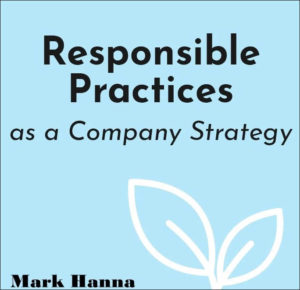 Hanna — a vocal activist for sustainability in the jewelry industry, sharing his knowledge in a recent Plumb Club podcast — is collaborating with Initiatives in Art and Culture on a virtual conference series, Boldly Building the Future. The inaugural topic, Decade of Action: Climate and the Precious Metals Industry took place in December, addressing the directives of the COP26 as it relates to industry climate action. Future series will cover the measurement of our industry’s footprint plus the important topics of the goal of net-zero or net-neutral, and the understanding and action to minimize Scope 1,2,3 Emissions.
Hanna — a vocal activist for sustainability in the jewelry industry, sharing his knowledge in a recent Plumb Club podcast — is collaborating with Initiatives in Art and Culture on a virtual conference series, Boldly Building the Future. The inaugural topic, Decade of Action: Climate and the Precious Metals Industry took place in December, addressing the directives of the COP26 as it relates to industry climate action. Future series will cover the measurement of our industry’s footprint plus the important topics of the goal of net-zero or net-neutral, and the understanding and action to minimize Scope 1,2,3 Emissions.
“The era of corporate sustainability strategy has arrived and it’s entrenching itself as fundamental to the basic workings of all business, and is integrated into the bottom line,” says Hanna. “Each of us needs to work on enhancing trust in the global jewelry industry. What unites us is our shared belief that responsible business is good business. Shaping the future of sustainable business is as much about opportunities as it is about risks.”
Responsible by Choice
The business case for responsible best practices is complex. Yet, in a more inter-connected, post-global health and recession world, the business case is stronger than ever before, says Hanna, who believes the increasing pressure on private enterprise to create social good is only going to grow.
Hanna advocates being “compliant by law and responsible by choice.” He sees the adoption of sustainability practices as a form of strategic differentiation that can lead to superior financial performance, as well as a strategic necessity that can ensure corporate survival with or without financial out performance.
Leo Schachter Diamonds’ Kalahari Dream Diamond program offers an example of this differentiation and what supply chain partnerships can do. Kalahari Dream Diamonds are sourced from diamond mining companies in southern African that follow strict ecological and social criteria and industry guidelines. The diamonds are finished in Leo Schachter’s factory in Botswana, which has been operated by LSD since 1997 and employs mostly women, is operated by local management that has grown with the inception of factory and is giving back to the community in a range of jobs, educational opportunities, as well as being a longtime supporter of the local Bana Ba Kelesto Childcare Centre for orphans.
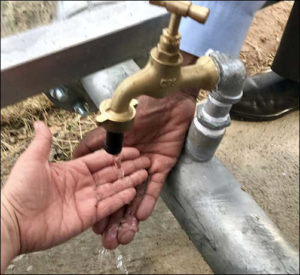 Borsheim’s, which launched Kalahari Dream Diamonds several years ago, has been committed to funding the creation of direct, consistent and sustainable water delivery systems to the drought impacted Malwelwe, Ngware and Matlagase villages in Botswana through a set sales goal from their Kalahari Dream Diamonds. Another retail partner, Helzberg Diamonds, donates a percentage of net sales to the childcare center in Molepolole, which provides children with access to safe transportation, education and counseling, and healthcare and healthy meals. The brand intends to make this available to additional high-end independent jewelers in 2022.
Borsheim’s, which launched Kalahari Dream Diamonds several years ago, has been committed to funding the creation of direct, consistent and sustainable water delivery systems to the drought impacted Malwelwe, Ngware and Matlagase villages in Botswana through a set sales goal from their Kalahari Dream Diamonds. Another retail partner, Helzberg Diamonds, donates a percentage of net sales to the childcare center in Molepolole, which provides children with access to safe transportation, education and counseling, and healthcare and healthy meals. The brand intends to make this available to additional high-end independent jewelers in 2022.
Where to Begin
“Sustainability is the concept of maintaining equitable conditions across not only socioeconomic and geographic barriers, but also generations and through time. Sustainability seeks to demonstrate that there is a way for society to progress and prosper in harmony with people and the environment,” defines Hanna.
The specific framework is less important than the core idea that companies can and should integrate social responsibility into their business model and strategy, says Hanna, who identifies responsible best practices as the next normal.
Since starting down this road 16 years ago, Hanna says that he has tried to consider the materiality of efforts and has focused on the importance of “return on responsibility” or ROR, and the collective benefits for a company to better the world. Engagement in sustainability has, due to the pandemic, deepened with consumers wanting companies to act responsibly by considering the social and environmental impacts of their business.
Responsibility and sustainability efforts can dramatically change people’s perspective of companies. Business leadership sets the tone of what the ethics and values are. “Your social purpose should be a priority and communicated to customers, associates and stakeholders,” says Hanna. “Have a written, shared code of ethics to guide those with whom you work, including suppliers. Define what return on responsibility (ROR) means to you and your company.”
The ROR model assures that your sustainability and CSR programs enhance your reputation, employee attraction and retention, partner and supplier relationships, ability to meet current and future environmental requirements, and your community/footprint responsibilities.
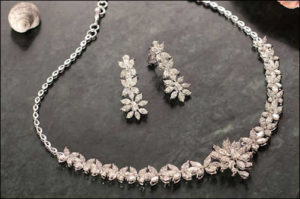 Stanley shares with KP Sanghvi some ways jewelers can take an action at retail, including reducing their carbon footprint; exploring environmental certification; committing to diversity, equity and inclusion; educating consumers on environmental and social impact; and shifting to sustainable packaging. He advocates jewelers assess the areas they want to improve to decide how to move forward.
Stanley shares with KP Sanghvi some ways jewelers can take an action at retail, including reducing their carbon footprint; exploring environmental certification; committing to diversity, equity and inclusion; educating consumers on environmental and social impact; and shifting to sustainable packaging. He advocates jewelers assess the areas they want to improve to decide how to move forward.
Hanna says there are lots of insights to be gleaned for businesses of all sizes at https://together-for-our-planet.ukcop26.org/get-involved/.
